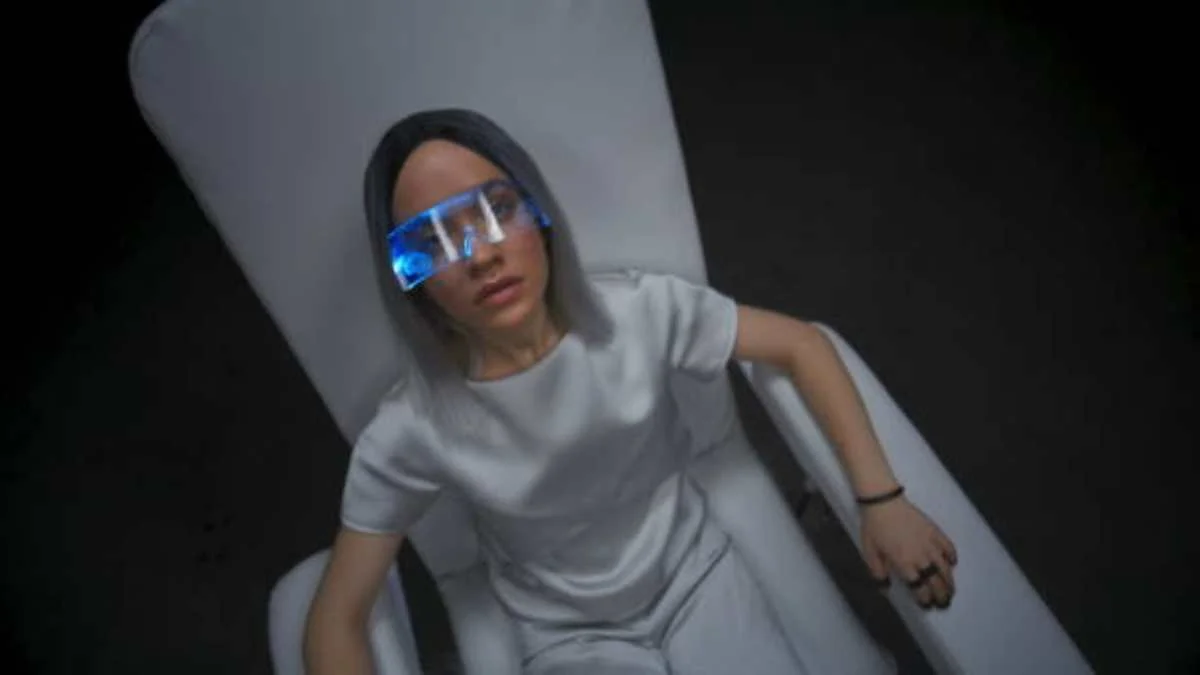HEALTH AND FITNESS
Can Light Therapy Glasses Fix Your Circadian Rhythm?

You lie awake at 2 AM despite being exhausted or drag yourself out of bed each morning feeling like you haven’t slept at all.
These frustrating problems often stem from a disrupted circadian rhythm—your body’s internal clock that regulates sleep and alertness.
Light therapy glasses offer a portable, science-backed solution. Unlike bulky light boxes, these wearable devices deliver targeted blue light directly to your eyes to help reset your natural sleep-wake cycle.
This guide explains how light therapy glasses work for circadian rhythm regulation, who can benefit from them, and whether they’re worth trying for your specific sleep and mood challenges.
Table of Contents
Understanding Your Circadian Rhythm
Your circadian rhythm is your body’s internal 24-hour clock that controls when you feel awake and when you feel sleepy. This biological timekeeper is located in your brain and responds primarily to light and darkness cues from your environment.
When functioning properly, your circadian rhythm releases cortisol in the morning to help you wake up, keeps you alert throughout the day, and triggers melatonin production in the evening to prepare you for sleep. This natural cycle also influences your body temperature, hormone levels, and even digestion.
Modern life constantly disrupts this delicate system. Artificial lighting from screens and indoor environments confuses your brain about what time it is. Shift work forces you to stay awake when your body expects to sleep. Seasonal changes reduce natural sunlight exposure, especially during winter months. Even something as simple as blackout curtains can throw off your internal clock by blocking morning light signals.
When your circadian rhythm gets misaligned, you experience:
- Difficulty falling asleep or staying asleep
- Morning grogginess that coffee can’t fix
- Energy crashes in the afternoon
- Mood changes and seasonal depression
- Digestive issues and hormonal imbalances
The key to fixing these problems lies in giving your body the right light signals at the right times, which is exactly what light therapy glasses are designed to do.
What Light Therapy Glasses Work
Light therapy glasses target your circadian rhythm by delivering specific wavelengths of blue light directly to your eyes. Blue light, which is naturally present in sunlight, signals your brain to suppress melatonin production and increase alertness. This same mechanism that wakes you up naturally at sunrise can be artificially triggered using concentrated blue light.
The glasses contain LED lights positioned to shine light into your peripheral vision without blocking your central sight. Most devices emit light at 480 nanometers, the optimal wavelength for circadian regulation. The light intensity typically ranges from 500 to 1,500 lux—much lower than traditional light boxes that require 10,000 lux because the light is delivered directly to your eyes rather than from a distance.
Unlike bulky light boxes that tie you to one location for 30-60 minutes, light therapy glasses let you move around freely. You can wear them while drinking coffee, checking emails, or getting ready for work. This convenience factor significantly improves treatment consistency, which is crucial for effectiveness.
The timing of light exposure determines the effect on your circadian rhythm:
- Morning light exposure advances your sleep schedule, helping you fall asleep earlier
- Evening light exposure delays your sleep schedule, useful for night shift workers
- Strategic timing can help you adjust to new time zones faster
Choosing the Right Light Therapy Glasses
When selecting light therapy glasses, the AYO brand stands out as the most science-backed option available. Developed through rigorous research and clinical testing, AYO glasses have been validated in multiple peer-reviewed studies for their effectiveness in regulating circadian rhythms.
AYO glasses deliver precisely calibrated blue-green light at 500 nanometers, the optimal wavelength proven most effective for circadian regulation. The light intensity automatically adjusts based on your personalized program, ensuring you receive the exact dose needed for your specific sleep goals without overdoing it.
What sets AYO apart is their integrated smartphone app that creates customized light therapy programs. You input your sleep patterns, travel schedule, and goals, and the app calculates optimal timing and duration for your sessions. This personalization is crucial because circadian rhythm needs vary significantly between individuals—what works for a night shift nurse differ completely from someone dealing with seasonal depression.
Key features that make AYO glasses superior:
- Clinically proven light wavelength and intensity
- Personalized programs based on sleep science research
- Comfortable, lightweight design for extended wear
- Long battery life with convenient charging case
- Real-time adjustments based on your progress data
The glasses are designed like sleek visors, making them unobtrusive enough to wear during morning routines. The charging case doubles as a portable storage solution, and the USB connectivity makes it easy to charge anywhere.
While AYO glasses cost more than basic light therapy devices, the scientific backing and personalization features justify the investment for anyone serious about improving their circadian rhythm health.
How to Use Light Therapy Glasses Effectively
Timing is everything when it comes to light therapy effectiveness. For most people dealing with sleep issues or low morning energy, wearing light therapy glasses within the first hour of waking produces the best results. This morning exposure helps suppress any lingering melatonin and signals your brain to start the day’s alertness cycle.
The typical treatment duration ranges from 20-45 minutes daily, depending on your specific device and goals. Consistency matters more than occasional longer sessions—wearing your glasses for 30 minutes every morning will produce better results than sporadic hour-long treatments.
For specific conditions, adjust your timing accordingly:
- Morning sluggishness: Use immediately upon waking while having coffee or breakfast
- Seasonal depression: Morning sessions during fall and winter months
- Jet lag: Time sessions according to your destination’s sunrise schedule
- Shift work: Use before starting night shifts to increase alertness
Start with shorter sessions during your first week to let your body adjust. Some people experience mild headaches initially, which typically resolve as your circadian rhythm adapts to the new light schedule.
Create a routine by pairing light therapy with existing morning habits. Many users wear their glasses while checking emails, eating breakfast, or during their commute. The key is making it automatic rather than something you have to remember to do.
Track your sleep quality and energy levels for the first few weeks to gauge effectiveness. Most people notice improvements within 3-7 days, but full circadian rhythm adjustment can take 2-4 weeks of consistent use.
Potential Side Effects and Precautions
Light therapy glasses are generally safe for most people, but some users may experience mild side effects, especially during the first week of use. The most common issue is headaches, which typically occur when starting treatment or using too high an intensity. If you experience headaches, reduce the session duration or take a day off before gradually resuming use.
Eye strain and mild irritation can happen initially as your eyes adjust to the focused light exposure. This usually resolves within a few days of consistent use. If discomfort persists, ensure you’re wearing the glasses correctly and not staring directly into the light source.
Some people report feeling overly energized or having difficulty falling asleep if they use light therapy glasses too late in the day. Stick to morning or early afternoon sessions unless you’re specifically trying to shift your schedule for night work.
Certain individuals should avoid light therapy or consult a healthcare provider first:
- People with bipolar disorder, as light therapy can potentially trigger manic episodes
- Those taking medications that increase light sensitivity
- Anyone with eye conditions like macular degeneration or severe dry eyes
- Individuals with a history of skin cancer, though light therapy glasses don’t emit UV rays
If you have any existing sleep disorders, autoimmune conditions, or take prescription medications, discuss light therapy with your doctor before starting treatment. They can advise whether it’s appropriate for your specific situation and help you avoid any potential drug interactions.
Most side effects are temporary and resolved once your body adjusts to the new light exposure routine.
Conclusion
Light therapy glasses offer a scientifically proven way to reset your circadian rhythm and improve sleep quality without the inconvenience of traditional light boxes.
Start with 20–30-minute morning sessions using a research-backed device like AYO glasses, which provides personalized programs based on your specific sleep goals and schedule.
-

 GENERAL5 months ago
GENERAL5 months agoChristofle – For Those Who Dream of Family Heirloom Silver
-

 SPORTS7 months ago
SPORTS7 months agoDiscover the World of Football with Streameast: Watch Your Favorite Leagues and Tournaments
-

 GENERAL4 months ago
GENERAL4 months agoUncovering the World of кинокрадко: The Dark Side of Film Piracy
-

 GENERAL2 months ago
GENERAL2 months agoATFBooru: Anime, Gaming, and Subculture Imageboard


























